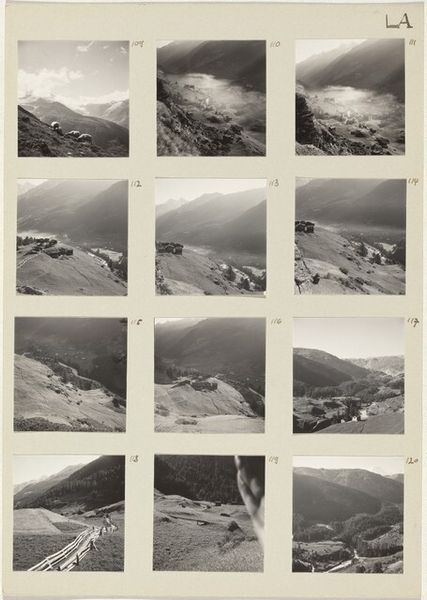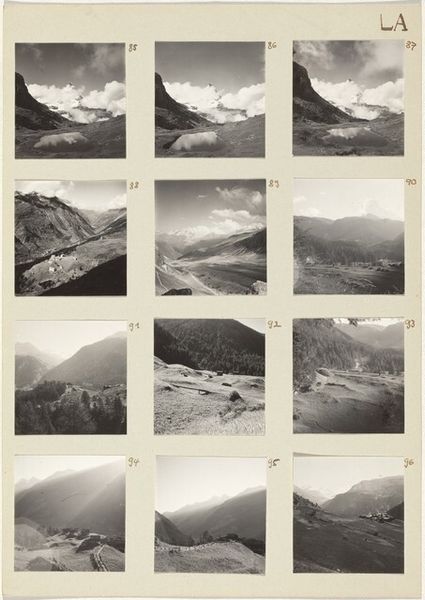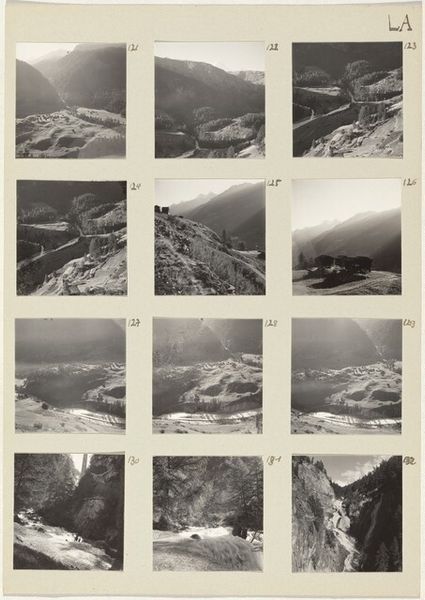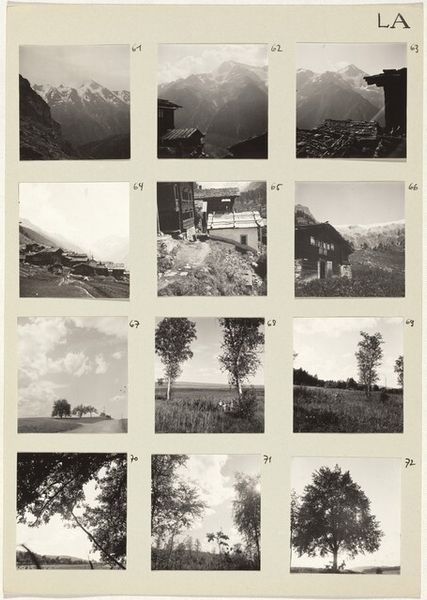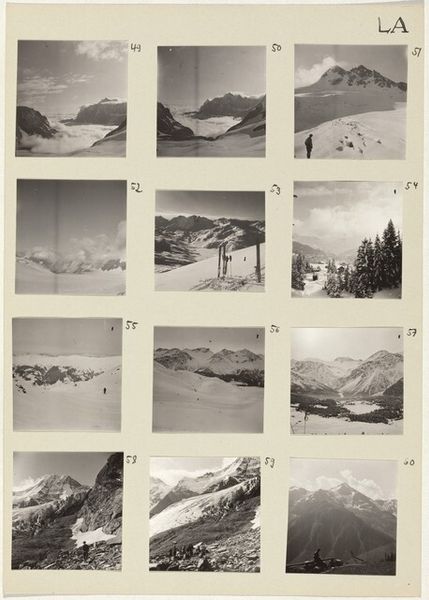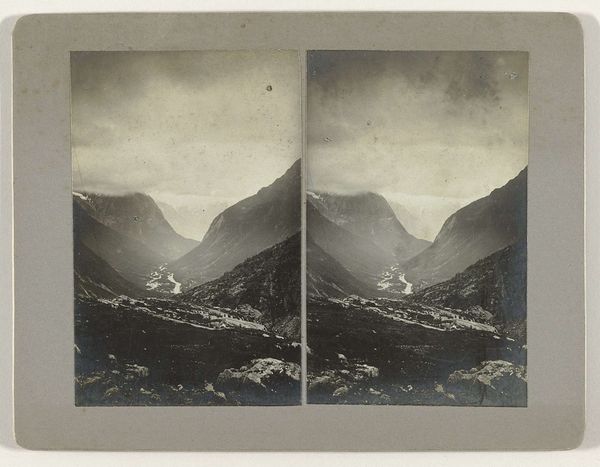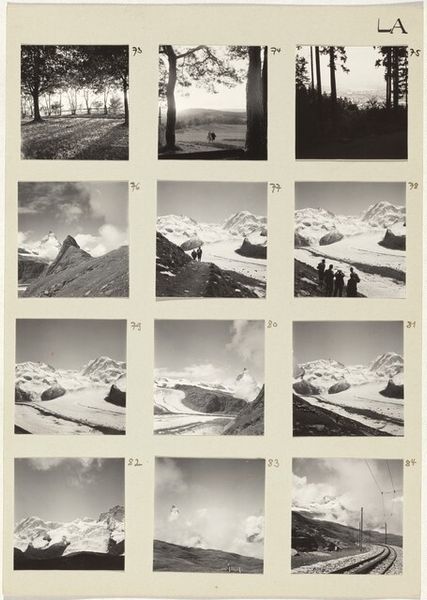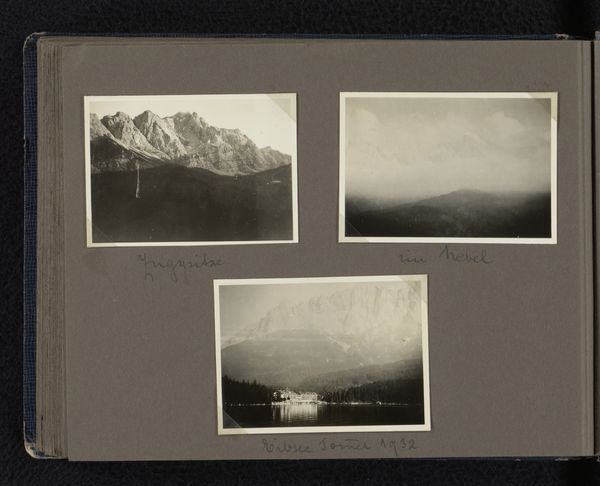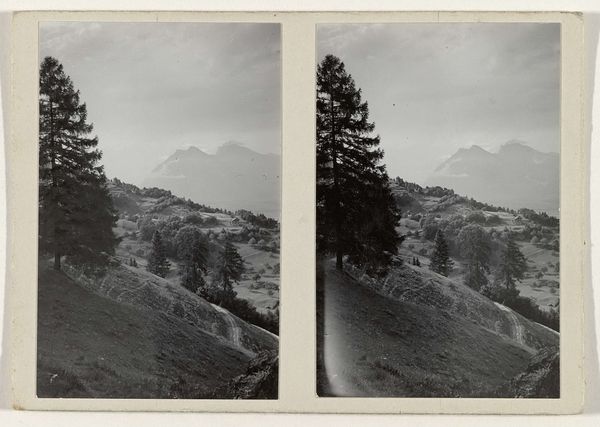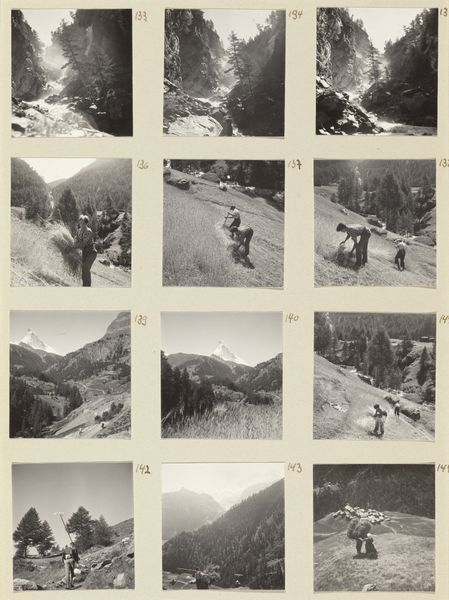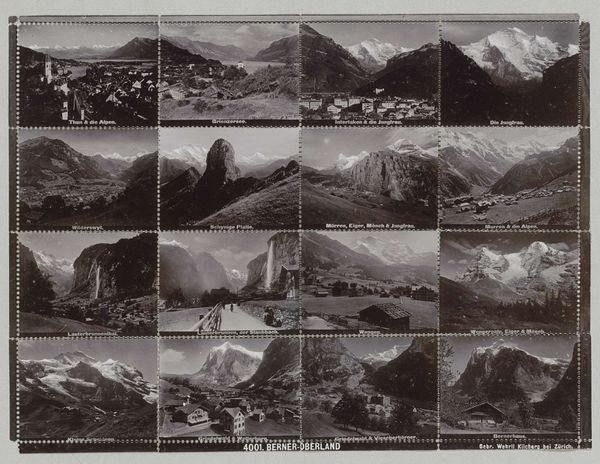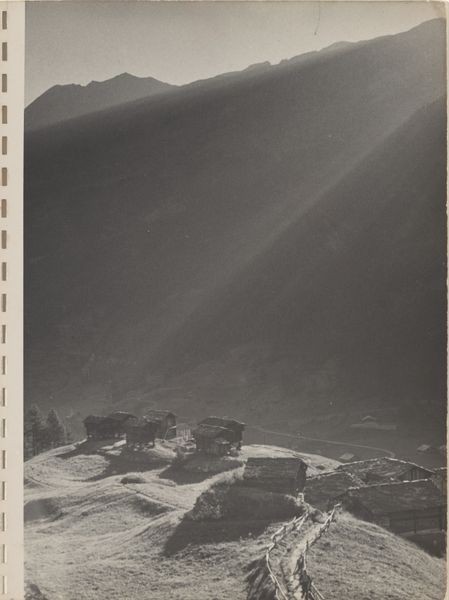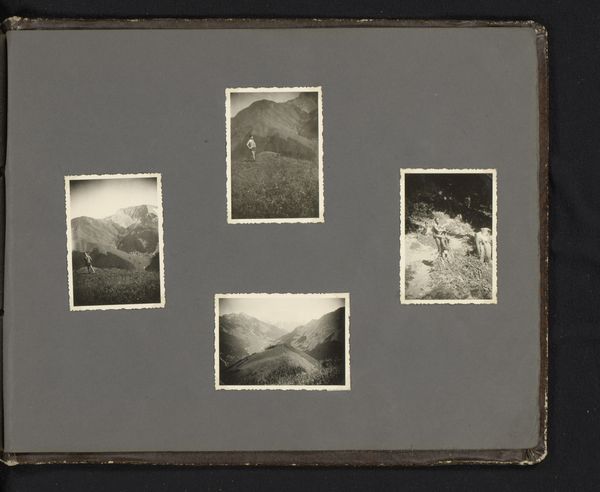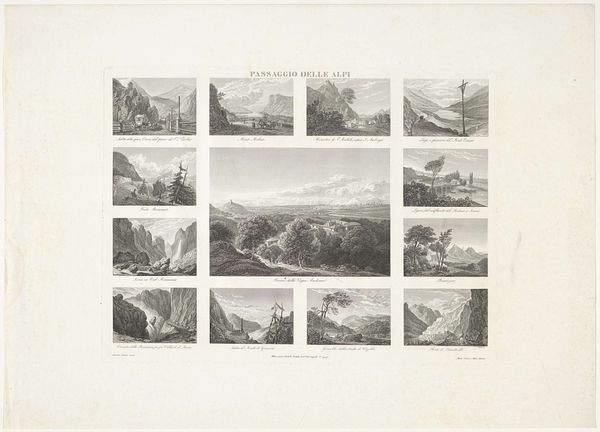
photography, gelatin-silver-print
#
landscape
#
photography
#
geometric
#
gelatin-silver-print
#
modernism
#
realism
Dimensions: sheet: 29.6 x 21 cm (11 5/8 x 8 1/4 in.)
Copyright: National Gallery of Art: CC0 1.0
Curator: Robert Frank's "Die Landschaft (Landscape) 97-108," dating from 1942 to 1946, is a compelling gelatin-silver print, structured as a photographic grid of twelve images. Editor: It strikes me immediately with its subdued tone and powerful geometric design, like a calendar filled with memories of mountain light and shadow. Curator: The landscapes within the grid oscillate between rural clarity and obfuscated luminosity. We see recurring motifs of peaks, fields, structures, and rays of light, each framed tightly and numbered systematically. Editor: Given the years it was made, and that Frank was a Swiss Jew living through the Second World War, it makes me think about issues of refuge, landscape, and obscured vision—the search for a place of belonging against the backdrop of terrible events unfolding elsewhere. What does it mean to look directly versus obliquely when the world feels imperiled? Curator: The gelatin-silver print enhances the textural contrasts, particularly the nuances between soft shadows and bright areas. I'm drawn to the formal repetitions, and to the serial structure of the piece. Notice, in each image the rule of thirds and leading lines frame views with remarkable balance, further emphasizing geometric elements. Editor: Yes, but is this repetition and symmetry comforting, or does it emphasize how many different ways one might perceive landscape at that particular point in time. I wonder if there are certain ideological viewpoints about photographic practices or modern life reflected in what we find and don't find represented? Curator: Considering it's a contact sheet, or even simulates one, this brings into question Frank's practice. Does he mean to democratize this natural world? Editor: Perhaps by allowing us to understand it with multiple viewpoints and at multiple moments of its own history and our own, there is also the desire for access and protection of nature for future generations to learn from and find belonging in as well. Curator: Looking again at the geometric structure, my thoughts center around how light creates subtle geometries on its own and it interacts with pre-existing geometric spaces we attempt to inhabit or traverse. Editor: Yes, the act of capturing and assembling nature becomes political because photography offers an idea of space, vision, and experience during wartime. It provides more intimate visions into what's around the image for context clues as well.
Comments
No comments
Be the first to comment and join the conversation on the ultimate creative platform.
